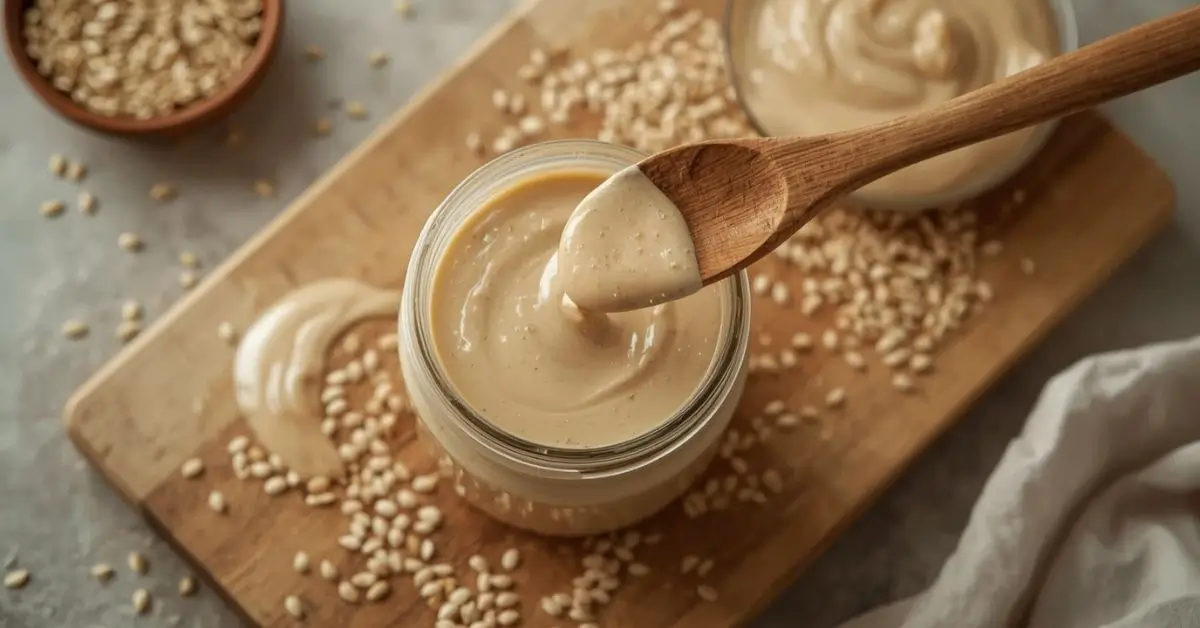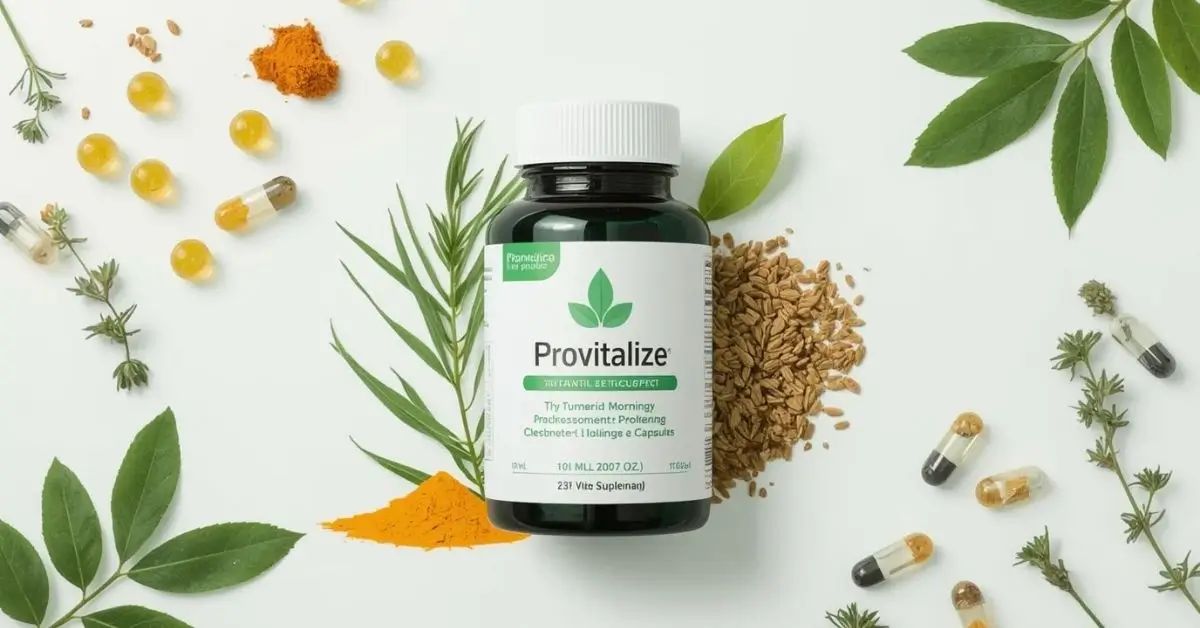HEALTH
Hidden Scars: What Childhood Trauma Test Images Reveal

Unspoken Wounds: Understanding Childhood Trauma Through Test Pictures
Hidden Scars Childhood trauma often hides behind silence. Children, unlike adults, don’t always have the vocabulary to express pain. That’s where childhood trauma test pictures come into play — a visual gateway into the untold stories of their emotional world.
The Silent Language of Images Hidden Scars
Psychologists have long used images to understand subconscious feelings. From Rorschach inkblot tests to thematic apperception tests (TAT), picture-based assessments help children project internalized emotions onto external stimuli. A child might see a chaotic inkblot and say it looks like “a monster in the corner,” revealing fear or past trauma.
In clinical settings, these images are never analyzed in isolation. Instead, they’re paired with observations, storytelling, and often play therapy techniques to uncover the layers beneath.
What Makes a Picture “Trauma-Informed”?
Not all images are created equal. In trauma-informed settings, therapists use specially curated images designed to evoke safe but emotionally significant responses. A picture of a parent walking away or a broken toy, for instance, might be more revealing than a drawing of a sunny day.
Such visuals are tailored to elicit responses connected to adverse childhood experiences (ACEs) like:
-
Neglect
-
Abuse
-
Abandonment
-
Witnessing domestic violence
A Glimpse Inside the Child’s Mind
Imagine a therapist shows a child a photo of two kids playing while a third watches from a distance. The child might say, “That’s me. They never let me play.” That response reveals more than any multiple-choice questionnaire ever could.
These responses aren’t “right” or “wrong” — they’re emotionally significant. That’s why professionals trained in developmental psychology, child behavior, and PTSD evaluation interpret them.
Emotional Projection and Brain Development Hidden Scars
By age 7, children are capable of symbolic thinking, which is crucial for interpreting or responding to images. This is also the age when many trauma symptoms — nightmares, emotional withdrawal, or aggression — start manifesting. Visual prompts allow therapists to connect those behaviors to deeper, often repressed events.
Terms like psychological projection, attachment theory, and emotional regulation become essential when understanding how and why these pictures work.
Ethical Considerations in Using Trauma Images
Using trauma pictures with children requires sensitivity. Misuse can re-traumatize the child or lead to false interpretation.
Trained clinicians follow ethical guidelines such as:
-
Getting informed consent from guardians
-
Ensuring age-appropriateness of materials
-
Using culturally sensitive visuals
-
Avoiding suggestive or leading questions
That’s why self-diagnosing with “trauma test images” online can be misleading. Always seek professional guidance.
Real Case Example (Anonymized)
A seven-year-old girl named “Mia” was reluctant to talk. When shown a drawing of a child hiding under a table, she whispered, “She’s scared of Daddy yelling.” Over time, her stories became richer, and her therapist helped her process emotional neglect she couldn’t name in words.
This kind of case highlights how visual communication bypasses language barriers and directly engages the emotional brain — particularly the amygdala and hippocampus, which store trauma memories.
FAQs (Integrated)
Children can’t always say, “I’m scared” or “I was hurt.” That’s why many caregivers ask:
Can pictures really uncover hidden trauma?
Yes — when interpreted by a licensed trauma therapist. These tools aren’t magical but provide deep insight into unconscious feelings.
Are these pictures like lie detectors?
Not at all. They’re emotional mirrors, not lie detectors. A child’s response says more about their feelings than about facts.
Where can I access validated childhood trauma test pictures?
Only licensed professionals should use them. However, some reputable psychology journals and trauma centers may provide case-based examples for educational use.
Risks of Using Trauma Pictures Without Training Hidden Scars
Using such tools without training can:
-
Mislabel a non-traumatized child
-
Miss actual red flags
-
Create false memories or reinforce denial
That’s why trauma-informed schools, clinics, and hospitals invest in multidisciplinary teams to analyze image-based responses effectively.
Recovery Through Representation Hidden Scars
The goal of using childhood trauma test pictures is not diagnosis alone — it’s recovery. Many trauma survivors revisit these images years later in EMDR therapy, CBT, or inner child healing, often reconnecting the fragments of memory they once buried.
Final Thoughts
Childhood trauma doesn’t shout — it whispers. Through pictures, these whispers become audible. As long as they are used responsibly, trauma test images can transform therapeutic silence into meaningful conversation

FOOD
Top 7 Health Benefits of Tahhiini You Should Know

Tahhiini, often spelled tahina or tahini, is a sesame paste made by grinding roasted or raw sesame seeds into a smooth, oily butter. Think of it as the sesame equivalent of peanut butter — only creamier, more delicate, and packed with a distinct earthy flavor.
Tahhiini has been a staple ingredient across the Middle East for thousands of years, used in dishes like hummus, baba ghanoush, halva, and even sweet pastries. Today, it’s celebrated worldwide as a superfood for its rich nutrient profile, versatility, and clean plant-based origin.
The Ancient Story of Tahhiini
The origins of tahhiini go back over 4,000 years to the ancient Middle East, where sesame seeds were prized for their oil and medicinal properties. Records from Mesopotamia and Persia mention tahina as a food of the elite — both for nourishment and luxury.
Fast forward to the 21st century, and tahhiini has evolved into a global pantry essential. From health-conscious millennials to Michelin-star chefs, everyone’s finding a place for this humble sesame paste.
Types of Tahhiini: Choosing the Right One
Not all tahhiini is created equal. The flavor, color, and texture depend on the kind of sesame seeds used and how they’re processed. Let’s break down the main varieties:
Hulled Tahini
This version is made from sesame seeds with their outer shells removed. The result? A smoother, lighter-colored tahini with a mild flavor and silky consistency. It’s ideal for tahini sauce, tahini dressing, and desserts.
Unhulled Tahini
Unhulled tahhiini keeps the seed’s outer shell intact, giving it a deeper color, thicker texture, and more robust taste. It’s richer in calcium and fiber but can taste slightly bitter. If you’re into nutrient density, this one’s for you.
Roasted Tahini
Roasted tahhiini uses sesame seeds that have been lightly toasted before grinding. This enhances its nutty aroma and creates a warm, deep flavor that’s perfect for savory dishes or tahini dip.
Raw Tahini
Raw tahhiini is made from unroasted seeds, preserving its delicate and slightly bitter taste. It’s great for smoothies, salad dressings, or as a base for healthy desserts where subtlety matters.
Tahhiini vs. Sesame Seed Butter
While they sound similar, tahhiini and sesame seed butter have slight differences. Sesame butter is often thicker, made with roasted seeds, and sometimes sweetened. Tahhiini, on the other hand, stays pure — just ground sesame seeds and nothing else.
This purity makes it ideal for both savory and sweet recipes, from creamy tahini sauce to sweet tahini cookies or even tahini halva.
Delicious Ways to Use Tahhiini
Tahhiini’s charm lies in its adaptability. It blends beautifully with both salty and sweet ingredients. Here are some popular ways to incorporate it into your cooking:
Tahini for Hummus
Every good hummus recipe starts with high-quality tahhiini. Its creamy texture adds richness, while its earthy tones balance the bright acidity of lemon and the sharpness of garlic.
Tahini Dressing for Salads
Mix tahhiini with lemon juice, garlic, olive oil, and water for an easy, zesty tahini dressing. It’s vegan, gluten-free, and adds instant sophistication to any salad.
Tahini Dip for Snacks
Pair tahini dip with pita bread, falafel, or roasted veggies. Add a pinch of cumin or paprika for a Middle Eastern flair.
Tahini and Lemon Sauce for Grilled Dishes
This duo is a match made in heaven. Tahini and lemon sauce works wonders over roasted vegetables, grilled fish, or even as a sandwich spread.
Tahini Halva and Tahini Cookies
Sweet lovers, rejoice! Tahini halva is a melt-in-the-mouth sesame dessert, while tahini cookies bring a nutty twist to traditional baking. Their balance of sweetness and depth makes them unforgettable.
Health Benefits of Tahhiini
Tahhiini isn’t just delicious — it’s also a nutritional powerhouse. Packed with healthy fats, plant-based protein, and essential minerals, it’s earned its superfood reputation for good reason.
Heart Health Support
Tahhiini is rich in monounsaturated and polyunsaturated fats, which can help lower bad cholesterol and reduce the risk of heart disease.
High in Calcium and Iron
Especially in unhulled tahini, calcium levels are impressive. One tablespoon can contain up to 10% of your daily calcium needs — a huge plus for vegans.
Protein for Vegans and Vegetarians
A serving of tahhiini offers around 5 grams of protein, making it an excellent source of plant-based energy.
Antioxidant Power
Sesame seeds are loaded with lignans and vitamin E, known for their antioxidant and anti-inflammatory effects.
Gut Health and Fiber
Unhulled tahhiini provides extra fiber, aiding digestion and maintaining a healthy gut microbiome.
Expert Tips: How to Use Tahhiini Like a Chef
- Warm before using: Tahhiini can separate or harden at the bottom of the jar. Stir well or warm slightly for a smooth consistency.
- Balance flavors: Tahhiini pairs beautifully with acid (like lemon or vinegar), salt, and sweetness.
- Experiment globally: Use tahhiini in Asian noodle sauces, smoothie bowls, or even chocolate spreads.
- Store smart: Keep it in a cool, dark place. Refrigeration can make it too thick, but room temperature keeps it perfect for drizzling.
A Real-Life Tahhiini Moment
A food blogger once tweeted, “I replaced peanut butter with tahhiini in my morning toast — and now I can’t go back. It’s creamy, savory, and somehow feels healthier.” That single post sparked thousands of comments, proving how tahhiini has quietly become the new breakfast trend.
Pros and Cons of Tahhiini
| Pros | Cons |
|---|---|
| Rich in nutrients and healthy fats | Can taste bitter if unhulled |
| Vegan and gluten-free | Some brands separate quickly |
| Versatile for sweet and savory dishes | High in calories if overused |
| Long shelf life | May cause allergies for some people |
| Supports heart and bone health | Needs stirring before use |
Modern Uses of Tahhiini in 2025
The year 2025 has brought a new wave of tahhiini creativity. Vegan bakeries now use tahini spread as a base for frostings and fillings. Fitness influencers blend raw tahini into protein smoothies. Even baristas are experimenting with tahini coffee — yes, you read that right.
In the wellness community, tahhiini has become a top ingredient for those following Mediterranean, ketogenic, or anti-inflammatory diets. It’s also a go-to for those avoiding nut butters due to allergies.
Common Myths About Tahhiini
- Myth: Tahhiini is high in fat and unhealthy.
Fact: The fats in tahhiini are heart-healthy, similar to those in olive oil and avocado. - Myth: Tahhiini is only for hummus.
Fact: You can use tahhiini in desserts, sauces, smoothies, and even pancakes. - Myth: Tahhiini spoils quickly.
Fact: It actually has a long shelf life when stored properly — up to 6 months after opening.
How to Choose the Best Tahhiini Brand
When shopping for tahhiini in 2025, look for:
- Ingredients: 100% sesame seeds (no additives or oils).
- Texture: Smooth, not gritty or too thick.
- Color: Light beige for hulled, darker brown for unhulled.
- Origin: Lebanese, Israeli, Greek, and Turkish brands are often top-quality.
FAQ Section
Tahhiini is made by grinding roasted or raw sesame seeds into a smooth, creamy paste. It’s essentially pure sesame paste, sometimes called tahina.
Unlike peanut butter, tahhiini has no added sugar or salt (unless specified). It’s more earthy, thinner, and pairs well with both sweet and savory foods.
Yes! Toast sesame seeds, let them cool, then blend them with a drizzle of neutral oil until smooth. Homemade tahini spread can last 2–3 months in a sealed jar.
Natural oils rise to the top because tahhiini doesn’t contain stabilizers. Stir it well before each use — or store upside down for even consistency.
Final Thoughts
From its humble beginnings as an ancient sesame paste to becoming a modern health icon, tahhiini has earned its place in the global kitchen. Whether you’re using it as tahini dressing for your salads, swirling it into tahini halva, or baking tahini cookies, this silky superfood proves that simple ingredients often make the biggest impact.
HEALTH
Honest Guide to Provitalize Ingredients and Benefits

If you’ve been researching Provitalize ingredients, you’re probably curious about whether this supplement actually works, what herbs and probiotics it contains, and if it’s safe for women experiencing menopause. With so many natural menopause supplements flooding the market, it’s tough to know which ones are backed by science and which ones are just marketing hype.
Why Ingredients Matter in Natural Menopause Supplements
Choosing a supplement isn’t just about flashy labels or influencer recommendations. When it comes to natural menopause supplements, what’s actually inside the capsule makes all the difference.
Women between ages 40 and 60 often deal with fatigue, bloating, mood swings, stubborn belly fat, and hot flashes. Instead of turning to synthetic hormone therapy, many are seeking herbal weight management pills and probiotics that feel safer and more natural.
That’s where Provitalize comes in. Its formula combines:
- Probiotic ingredients to support gut health and reduce bloating
- Herbal extracts with thermogenic effects for metabolism
- Anti-inflammatory botanicals for joint and hormone support
But does the blend live up to the promises? Let’s dive deeper.
The Core Probiotic Ingredients in Provitalize
One of the most unique aspects of Provitalize is its inclusion of specific probiotic strains. Unlike general digestive probiotics, these are carefully chosen for weight management and menopause support.
Key Strains:
- Lactobacillus gasseri – Linked to reductions in abdominal fat and waist circumference in clinical studies.
- Bifidobacterium breve – Helps regulate fat metabolism and may improve skin hydration.
- Bifidobacterium lactis – Supports digestion, reduces bloating, and boosts immune response.
When people ask about probiotic ingredients in Provitalize, these three names are what stand out. They don’t just target digestion—they’re meant to balance inflammation and metabolism, which is crucial during midlife.
One user shared on social media: “I didn’t notice a change right away, but after 6 weeks the bloating eased, and my jeans fit better. It’s not a magic pill, but it feels like my gut is finally cooperating.”
Turmeric for Menopause Relief
Among all the Provitalize ingredients, turmeric root extract might be the most well-known. Used for centuries in Ayurveda, turmeric contains curcumin, a powerful anti-inflammatory compound.
Why it matters:
- Supports joint health – Menopause often brings stiffness and aches.
- Stabilizes mood – Some studies suggest turmeric helps regulate serotonin and cortisol.
- Eases hot flashes – While more research is needed, many women report fewer sudden sweats.
In the context of turmeric for menopause relief, Provitalize includes it not only for inflammation but also to counter oxidative stress, which naturally increases with age.
Moringa Leaf Benefits
Another herbal highlight is moringa leaf extract, sometimes called the “miracle tree.”
Known benefits:
- Rich in antioxidants like quercetin and chlorogenic acid
- Supports metabolism through natural plant compounds
- Balances blood sugar—important as insulin resistance increases with age
For women searching specifically for moringa leaf benefits, the inclusion of this extract makes Provitalize stand out among typical herbal weight management pills.
Curry Leaf Extract Supplement
A less common but intriguing ingredient is curry leaf extract. While many people know curry leaves from cooking, their medicinal properties go beyond flavor.
Potential roles:
- Lipid metabolism – May help manage cholesterol levels
- Digestive health – Traditionally used for reducing gas and indigestion
- Antioxidant support – Fights free radicals linked to cellular aging
In 2025, more women are turning toward curry leaf extract supplements as a gentler alternative to synthetic fat burners.
Thermogenic Herbs for Weight Loss
Provitalize also incorporates ingredients classified as thermogenic herbs, which help the body burn calories more efficiently by slightly raising metabolism.
- Curry leaf & moringa both contribute mild thermogenic effects.
- Turmeric supports fat metabolism through its influence on inflammation.
- Probiotics indirectly affect weight by improving gut flora linked to obesity.
For those searching for thermogenic herbs for weight loss, Provitalize offers a blend that doesn’t rely on stimulants like caffeine, making it safer for midlife women.
Natural Belly Fat Supplement for Women
Let’s address one of the biggest pain points: stubborn belly fat.
Belly fat during menopause isn’t just cosmetic—it’s often tied to hormonal shifts, slower metabolism, and changes in insulin sensitivity.
Provitalize positions itself as a natural belly fat supplement for women by combining probiotics (for gut balance) and anti-inflammatory herbs (to reduce cortisol-driven weight gain). While it’s not a quick-fix fat burner, the formula supports a healthier weight loss journey.
Safe Menopause Weight Loss Pills: Myth or Reality?
When people Google safe menopause weight loss pills, they’re often overwhelmed by flashy claims. Many supplements hide behind proprietary blends, leaving consumers guessing.
Provitalize is more transparent—it lists every ingredient and dosage. That aligns with today’s demand for honesty in wellness products.
Still, “safe” depends on the person. Women with allergies, medical conditions, or those on prescription meds should always consult their doctor first.
Comparison Table: Provitalize Ingredients vs Common Alternatives
| Ingredient | Found in Provitalize | Common Alternative in Market | Benefit |
|---|---|---|---|
| Probiotics (L. gasseri, B. breve, B. lactis) | Yes | General digestive probiotics | Gut + weight support |
| Turmeric | Yes | Black pepper extract | Anti-inflammatory, hot flash relief |
| Moringa leaf | Yes | Green tea extract | Antioxidant, metabolism boost |
| Curry leaf | Yes | Garcinia cambogia | Cholesterol + digestive support |
| Thermogenic herbs | Yes | Caffeine-based fat burners | Metabolism + safer for women |
Pros and Cons of Provitalize Ingredients
Pros:
- Natural herbs with anti-inflammatory benefits
- Specific probiotics studied for fat metabolism
- Non-stimulant formula (no caffeine jitters)
- Transparent labeling and dosages
Cons:
- Not an instant weight-loss solution
- Results vary depending on diet and lifestyle
- Some users may need weeks to see changes
- Limited clinical studies combining all ingredients together
Real-Life Example
Consider Laura, 49, who struggled with bloating, weight gain, and hot flashes:
“After three months on Provitalize, I noticed my energy picked up. I still have to watch my diet, but I feel like my body isn’t fighting me as much anymore.”
Her experience highlights a key point: supplements like Provitalize work best alongside a balanced lifestyle, not as a standalone fix.
FAQ’s
The formula includes probiotics (Lactobacillus gasseri, Bifidobacterium breve, Bifidobacterium lactis), turmeric root extract, moringa leaf extract, and curry leaf extract, among others.
Generally, yes. The ingredients are natural and non-stimulant. However, women with allergies or medical conditions should consult a healthcare professional before use.
No. Unlike many herbal weight management pills, Provitalize avoids caffeine, green tea extract, or harsh stimulants.
The probiotic strains support gut health, which helps reduce water retention, gas, and bloating—common issues during menopause.
Final Thoughts
When it comes to Provitalize ingredients, the formula is thoughtfully designed for women facing menopause-related challenges. With a mix of probiotics, turmeric, moringa, and curry leaf, it offers support for bloating, energy, weight balance, and inflammation—all without the harsh side effects of typical fat burners.
BLOG
Whats Wrong With Me? Signs of Stress, Anxiety, or Fatigue

If you’ve ever caught yourself thinking “whats wrong with me”, you’re not alone. Many people experience unexplained symptoms—whether it’s constant tiredness, sadness without reason, or difficulty focusing. It can feel overwhelming, even frightening. The truth is, there are many possible explanations, and most are manageable with the right support. This guide will help you explore both physical and emotional causes, recognize when professional help is needed, and discover practical steps to take back control.
Why We Ask “Whats Wrong With Me?”
Human beings are wired to notice changes in how they feel. Asking this question is often the first step toward better self-awareness and care. Some people may worry it’s a sign of something serious, but often it reflects:
- Stress overload from work, school, or family life
- Emotional struggles and mental health challenges like anxiety or depression
- Physical health changes such as fatigue, illness, or hormonal shifts
- Lifestyle factors like poor sleep, diet, or lack of movement
Common Emotional Reasons Behind “Whats Wrong With Me”
Stress and Anxiety
If you constantly wonder “why do I feel this way”, stress may be the root. According to the American Psychological Association (APA), stress triggers both emotional and physical reactions, including irritability, restlessness, and difficulty sleeping.
Signs of stress and anxiety:
- Racing thoughts
- Constant worrying without clear cause
- Physical symptoms like headaches or muscle tension
Depression and Low Mood
Sometimes people ask, “Why do I feel sad for no reason?” Persistent sadness, loss of motivation, or crying unexpectedly may point to depression. The National Institute of Mental Health (NIMH) notes that depression is one of the most common mental health conditions, and it is treatable.
Symptoms of anxiety and depression include:
- Ongoing fatigue
- Loss of interest in activities once enjoyed
- Trouble concentrating
- Sleep changes (too much or too little)
Physical Factors: When Your Body Sends Signals
Sometimes the question isn’t only mental—it’s physical. If you feel “What’s wrong with me if I feel tired all the time?”, underlying medical conditions might be involved.

Possible physical causes of unexplained fatigue:
- Thyroid disorders
- Vitamin deficiencies (e.g., B12, Vitamin D, Iron)
- Chronic illnesses like diabetes or autoimmune conditions
- Poor sleep hygiene
The Mayo Clinic recommends a health self-assessment guide and consulting a physician when symptoms persist beyond two weeks.
Physical vs. Mental Health: Why Both Matter
Many people confuse physical and emotional symptoms. For example:
| Symptom | Possible Physical Cause | Possible Mental Cause |
|---|---|---|
| Constant tiredness | Thyroid issues, anemia | Depression, burnout |
| Trouble focusing | Nutrient deficiency, poor sleep | Anxiety, ADHD |
| Unexplained sadness | Hormonal imbalance | Depression |
| Racing heartbeat | Cardiac condition, caffeine | Panic disorder, stress |
Understanding the connection between mind and body helps reduce self-blame and encourages a balanced approach to care.
Self-Help and Wellness Advice
If you find yourself searching for “what’s wrong with me quiz or self-test”, remember that online tools can guide reflection but should not replace professional help. Instead, focus on small, proven steps that improve overall wellbeing:
- Prioritize sleep: Aim for 7–9 hours per night
- Stay active: Exercise reduces stress hormones and boosts mood
- Eat mindfully: Nutrient-rich foods support brain and body health
- Practice mindfulness: Meditation, journaling, or deep breathing can calm anxious thoughts
- Talk it out: Confide in a trusted friend, family member, or therapist
When to See a Doctor or Therapist
Sometimes the best answer to “Whats wrong with me?” is seeking professional guidance.
Seek medical or mental health support if you experience:
- Persistent sadness or hopelessness
- Fatigue lasting longer than two weeks
- Severe anxiety interfering with daily life
- Unexplained physical pain or weight changes
- Suicidal thoughts or urges
Early intervention is often the key to effective treatment.
Expert Sources & Citations
- American Psychological Association (APA) – Stress and health connection
- National Institute of Mental Health (NIMH) – Depression symptoms and treatment
- Mayo Clinic – Guidance on fatigue and when to seek medical advice
FAQ’s
Why do I feel like something is wrong with me mentally?
It could be stress, anxiety, or depression. Mental health professionals can help determine the cause.
What’s wrong with me if I feel tired all the time?
Fatigue may stem from lifestyle habits, medical conditions, or mental health struggles. A doctor can run tests to rule out causes.
Why do I feel sad for no reason?
Unexplained sadness is often linked to depression, stress, or hormonal changes.
How to know if it’s anxiety or depression?
Anxiety is marked by worry and restlessness, while depression often involves low mood and lack of energy. Sometimes both overlap.
When should I see a doctor for my symptoms?
If your symptoms last more than two weeks, worsen over time, or affect daily functioning, consult a professional.
What’s wrong with me if I cry for no reason?
Crying without a clear cause may be a sign of emotional overload, stress, or depression.
Conclusion
Instead of fearing “whats wrong with me”, see it as a first step toward understanding your health. By exploring both physical and emotional causes, practicing self-care, and seeking professional support when needed, you can find clarity—and the path to feeling better.
-

 BLOG4 months ago
BLOG4 months agoShocking Gasp GIFs – Top 9 Picks
-

 TECH5 months ago
TECH5 months agoQuick Guide: How to Easily Reset Your Acer Laptop
-

 ENTERTAINMENT4 months ago
ENTERTAINMENT4 months agoTwitter Rate Limit Exceeded: What It Means and How to Fix It Fast
-

 BLOG5 months ago
BLOG5 months agoUnmasking the Risks: AI Face Swap in NSFW Content
-

 BLOG2 months ago
BLOG2 months agoIs Recurbate Safe for Users or a Hidden Risk?
-

 BLOG5 months ago
BLOG5 months agoMark Spaeny: Tailoring Success and Raising a Star
-

 BLOG5 months ago
BLOG5 months agoRagdoll Archers Unblocked: Chaos in Every Shot
-

 BUSINESS4 months ago
BUSINESS4 months agoBudget Connect: The Smartest Business Phone Service for Less